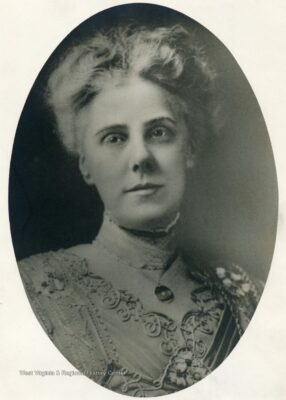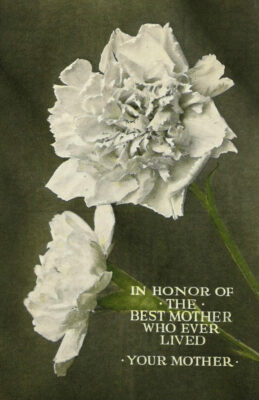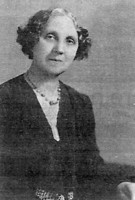An ancient tradition, Christian celebration or capitalist construction?
Have you ever wondered what is the difference between Mother’s Day and Mothering Sunday? This blog will delve into their origins and discover the difference, or similarities, of these days!
Similar to Christmas, the origins of this national holiday are a bit fluffy. Let’s start with one we are more familiar with; Mothering Sunday. According to Christian tradition in the UK and in parts of Europe, is held on the fourth day of Lent. It was originally a time when people returned to their ‘mother’ church. The church or cathedral is the place they were baptised or attended services when they were children.
This tradition became less religious and more secular as the modernisation kicked in. Flowers and tokens of appreciation would be presented to mothers as gratitude. But, how did it come to the ‘Mother’s Day’ we know today?
Mothering Sunday (as it is written on our calendars here in the UK) is held on a different date sometime in March. This can make it pretty easy to forget, causing a not-so-friendly and begrudging phone call from your mother, wondering where her well wishes are (so we should be thankful for the calendars!!).
Every year, we treat our mothers, grandmothers, stepmothers (anyone with the word mother in their title) to lunch, flowers and chocolate, buy a card that makes a significant dent in your bank account (you happen to notice this one eh?) to send in the post at the very last minute. But it’s all worth it because you want to, and also the fact that there is a whole day dedicated to motherly figures (which makes it a rather large ‘expected to’!).
Mother’s Day and Mothering Sunday are two different things with similar intentions

In America ‘ Mother’s Day’ , which is what we tend to call it here also in the UK, is held on the second Sunday of May, as proclaimed by President Woodrow Wilson in 1914. It is marked on that day because it was the result of a campaign by Anna Jarvis, whose own mother had died on May 9, who, long before then had expressed a desire for such a holiday to be established. Anna had campaigned to establish Mother’s Day first as a U.S. national holiday and then later as an international holiday (Mother’s Day is currently celebrated in over 40 countries worldwide!). The holiday was declared officially by the state of West Virginia in 1910, and the rest of the states followed very quickly. There was no connection whatsoever to ‘Mothering Sunday’. Traditions on Mother’s Day had typically included, attending church, family dinners and the deliverance of carnations.
Pink for the living and white for the dead

Carnations have come to represent Mother’s Day since the founder, Anna Jarvis delivered 500 of them at the first celebration in 1908. Many religious services held later adopted the custom of giving away carnations. This also started the custom of wearing a carnation on Mother’s Day. Anna Jarvis, chose the carnation because it was her late mother’s favourite flower. Due to the shortage of white carnations, and also because of the efforts to expand the sales of more types of flowers in Mother’s Day, florists invented the idea of wearing a pink carnation if your mother was living, or a white one if she was dead. This was incessantly promoted until it made its way into the popular observations at churches.

Rampant commercialisation ended in instant regret
The commercialisation of the American holiday began very quickly, and only a few years after the first official Mother’s Day (nine to be exact!). In fact, it had become so prevalent that Anna Jarvis herself became a major opponent of what the holiday had become, spending the rest of her life fighting what she saw as an ‘abuse of the celebration’. She belittled the practice of purchasing greeting cards, which she saw as a sign of being too lazy to write a personal letter. It was even recorded that she “…wished she would have never started the day because it became so out of control …” She sadly died later that year…
The revival of Mothering Sunday was inspired by Anna Jarvis
As the title quite rightly puts it, an English woman named Constance Smith was inspired by Anna Jarvis’ actions and became responsible for the revival of Mothering Sunday in the UK.

Constance Smith linked this concept to Mothering Sunday and had published a booklet titled, The Revival of Mothering Sunday, in 1920. Alongside a colleague from a society she was included in, Constance established a movement to promote Mothering Sunday, collecting and publishing information about the day and its traditional observance throughout the UK. This included researching into local traditions, such as the making of Simnel cake, a light fruit cake which is typically eaten during the Easter period, and wafer cakes, and presenting these delectables to Mother. The movement established Mothering Sunday as a widely observed day throughout Britain, and by the time of Constance’s death, the day was said to be observed in ‘every parish in Britain’, and every country in the British Empire!

So there isn’t much difference!
Along with modernisation, commercialisation is never far behind…
Which brings us to today and our extremely commercial, post-modern society! So, later today or tomorrow when you’re out buying that last minute card or frantically attempting to book a table at one of the many small local restaurants in your area for lunch, remember that you don’t have to buy that card that has all the sentimental writing on it that costs £3.50. Get her something or take her somewhere that’s personal to her instead, to show her how much you appreciate and love her. With flowers of course. But the easiest thing to do is to just buy the card really, isn’t it?

